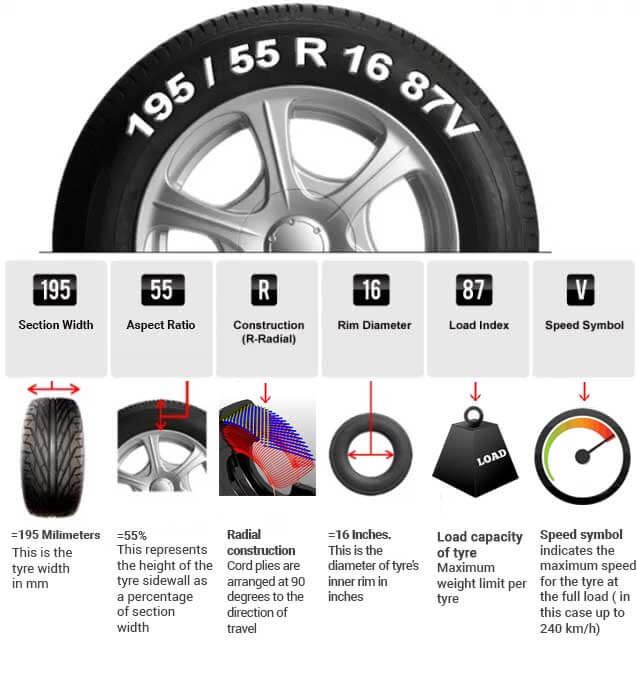Our car experts choose every product we feature. We may earn money from the links on this page.
Getty Images
Buying new tires can be a daunting experience. You face a bewildering array of brands, sizes and tire types to choose from, so it's easy to be confused. But don't worry: this guide will provide you with the essential facts you need to in order to make the right tire choice for your vehicle at the price you want to pay.
Before you buy, you'll need to know the answers to the following questions:
Already know about tires and just want our top picks? Our favorites in each category are listed below. Further down, you'll find more information about all-season, summer, and winter tires plus our top alternative picks in each category.
Best All-Season Tire
$127 at tirerack.com
Best Summer Tire
$241 at Tire Rack
Best Winter Tire
$104 at discounttire.com
Is our top pick unavailable in the size you need? Looking for a fast, easy way to sort through the dozens of alternatives? Then go to Tire Rack's Tire Decision Guide. The company says it'll have a list of appropriate alternative choices for you in two minutes or less. The tirerack.com site is also deep with important consumer data, including tire warranties, treadwear guarantees, and tire-test results.
$150 at Tire Rack
$138 at tirerack. com
com
$235 at Tire Rack
The vast majority of vehicles today come with all-season tires, which are designed to provide acceptable all-around capability throughout the year and in all weather conditions. That means a reasonable ride and respectable handling, quiet running, good wet-weather grip, and some capability in snow. Given their all-season designation, most car owners leave them on in winter and expect that their tires will deliver all the traction they need on snowy, icy roads. But most all-season tires are marginal in snow; dedicated winter tires, also known as snow tires, provide far better traction when the snow falls.
There are now two main sub-categories of all-season tires: high-performance all-seasons and grand touring all-seasons. High-performance all-season tires provide sharper handling than "standard" all-season tires. They grip the road more confidently and feel more sporty to drive—usually at the expense of some winter-weather traction. These tires are intended for sportier cars and more-aggressive drivers. Grand touring all-season tires have the lower-profile look of high-performance all-season tires but ride better at the price of some handling ability.
These tires are intended for sportier cars and more-aggressive drivers. Grand touring all-season tires have the lower-profile look of high-performance all-season tires but ride better at the price of some handling ability.
Recently, a subset of grand touring all-season tires has emerged that we call “all-weather” tires. These tires feature snow traction that almost comparable to that of pure winter tires while offering similar performance in other areas as conventional all-season tires. They are designated by a snowflake-within-a-mountain symbol on the tire's sidewall.
Summer Tires$160 at Tire Rack
$195 at Tire Rack
$211 at Tire Rack
This term is a misnomer, as this type of tire should rightly be called "three-season" rubber. Summer tires are designed specifically to deliver dry- and wet-weather traction in moderate or warm weather. They sharpen steering response, increase cornering traction by an order of magnitude, and stop your vehicle in much less distance. But they do so at a cost: most summer tires only work well at temperatures of about 40 degrees Fahrenheit and above. As outside temps fall toward freezing, the tires can feel skittish and behave inconsistently; they lose a large portion of their grip to the point that they act like they are on a wet or even icy road. More than one driver of a powerful car, unaware of the temperature sensitivity of its summer tires, has lost control and crashed on a cold day.
Summer tires are designed specifically to deliver dry- and wet-weather traction in moderate or warm weather. They sharpen steering response, increase cornering traction by an order of magnitude, and stop your vehicle in much less distance. But they do so at a cost: most summer tires only work well at temperatures of about 40 degrees Fahrenheit and above. As outside temps fall toward freezing, the tires can feel skittish and behave inconsistently; they lose a large portion of their grip to the point that they act like they are on a wet or even icy road. More than one driver of a powerful car, unaware of the temperature sensitivity of its summer tires, has lost control and crashed on a cold day.
As with all-season tires, summer rubber comes in several varieties. Tire Rack divides these tires into three main groups by escalating capability: ultra-high performance on the bottom rung, followed max performance and extreme performance. Summer tires come on cars such as Porsches, Corvettes, Mercedes-AMGs, and Mustangs.
$166 at Tire Rack
$180 at Tire Rack
$270 at Tire Rack
Called "snow tires" in the past, winter tires are designed to provide maximum traction in snow and in slippery winter conditions—and the traction they provide in those situations is not matched by any other category of tire. Even an all-wheel-drive vehicle on all-season tires cannot match the stopping or turning capability of a similar two-wheel drive vehicle fitted with four winter tires, a point we have proven in our own winter-tire testing.
Winter tires are designed to work well in the cold-weather months, but they don't handle or wear as well as all-season or summer tires once the weather warms up. They should be considered as a second set of tires for your vehicle if you live where snow flies annually. We fit all of our long-term test vehicles with winter tires and they've proven their worth many times over.
We fit all of our long-term test vehicles with winter tires and they've proven their worth many times over.
Why use winter tires? If you live in the northern states, we recommend purchasing a set of winter tires. Their deep treads are engineered to deliver a significant traction improvement, and do they ever work. You'll feel safer and be safer, not to mention more relaxed when driving in snow. Retailers such as Tire Rack will sell you a set of snows mounted on steel wheels that you can swap on when winter rolls around. Here at Car and Driver, we swear by them.
Tire Size and Other Factors
Most consumers choose to replace the worn tires on their vehicle with something equivalent in size and capability. This makes a lot of sense; your car was engineered to work well on the type and size of tires it came on, so fitting an identical or similar replacement set would maintain the performance and safety your vehicle was designed to deliver. (We'll get to upgrading later on).
(We'll get to upgrading later on).
To inform your decision process, you'll need to know your vehicle's tire size and speed rating, and you'll also want to consider how many miles you'll get out of any new tires you are considering (this is called tread wear). Much of that information is printed on the sidewalls of the tires that are on your car right now. It's also available in most owner's manuals, online, and at tire dealers. (We suggest cross-checking those sources to make sure you've got the right information.)
Here's how to read the most important data imprinted on your tires' sidewalls. (For an in-depth look at how to read all of the information on a tire sidewall, click here.)
KEY: 1) Tire width; 2) Aspect ratio; 3) Radial-tire designation; 4) diameter; 5) Load rating with speed rating; 6) Heaviest spot on tire; 7) Tread-wear rating; 8-9) Traction and temperature ratings; 10-11) Mud-and-snow or three-peak-mountain rating; 12) Vehicle-specific marking; 13) Tire-materials list and manufacturing information
Tire SizeIf you're going to replace your tires with something equivalent, you will need to know the proper size.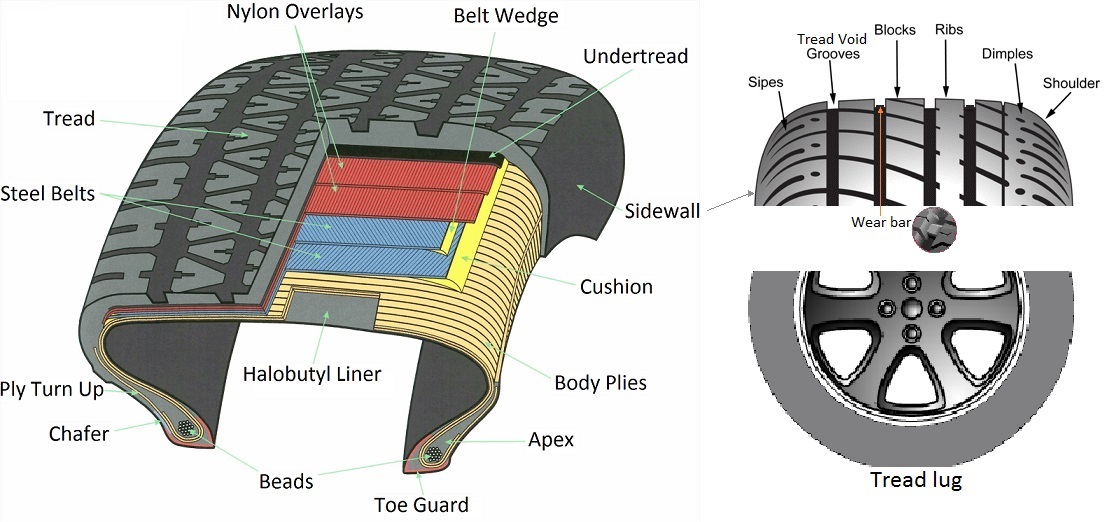 The size of car and light truck tires is usually expressed in a short series of numbers and letters that read like this (as seen in the above illustration): 245/40-R18. The first number indicates the width of the tire at its widest point in millimeters. The number after the slash is what's called the aspect ratio, which indicates how tall the sidewall is as a percentage of the width. The higher the number, the taller the sidewall. The squat tires fitted to sports cars and muscle cars, called low-profile tires, have aspect ratios of 30–40. Family sedans and SUVs are in the 45-60 range or taller. The final number in the series is the diameter of the wheel in inches that the tire must mount to. The "R" indicates it's a radial tire, which virtually all of today's tires are.
The size of car and light truck tires is usually expressed in a short series of numbers and letters that read like this (as seen in the above illustration): 245/40-R18. The first number indicates the width of the tire at its widest point in millimeters. The number after the slash is what's called the aspect ratio, which indicates how tall the sidewall is as a percentage of the width. The higher the number, the taller the sidewall. The squat tires fitted to sports cars and muscle cars, called low-profile tires, have aspect ratios of 30–40. Family sedans and SUVs are in the 45-60 range or taller. The final number in the series is the diameter of the wheel in inches that the tire must mount to. The "R" indicates it's a radial tire, which virtually all of today's tires are.
Tires also carry a speed rating, which indicates not only how fast they can safely go for an extended period of time, but also the overall performance potential of the tires. Tires for high-performance cars have a higher speed rating than those for mainstream family sedans and SUVs. The speed rating of the original tires that came on your car were matched to the maximum speed the car could attain—plus a significant built-in safety margin. This speed rating is expressed as a letter in the alpha-numeric code that immediately follows the tire size. Letters range from L to Y, and cover maximum speed ranges from 75 mph to more than 186 mph.
Tires for high-performance cars have a higher speed rating than those for mainstream family sedans and SUVs. The speed rating of the original tires that came on your car were matched to the maximum speed the car could attain—plus a significant built-in safety margin. This speed rating is expressed as a letter in the alpha-numeric code that immediately follows the tire size. Letters range from L to Y, and cover maximum speed ranges from 75 mph to more than 186 mph.
The are two pieces of data that will help you estimate how many miles you can expect from a set of tires: the tread-wear rating and the tire mileage warranty. The tread wear rating is listed as a number on the tire sidewall after the word "treadwear". The higher this number, the more likely the tire will last longer. But the tests that are used to determine treadwear aren't precise, so there is a lot of variability in this number.
A better way to gauge potential tire life, and to compare the expected longevity of different tires you might be considering, is to look at the manufacturers' tread-life warranties.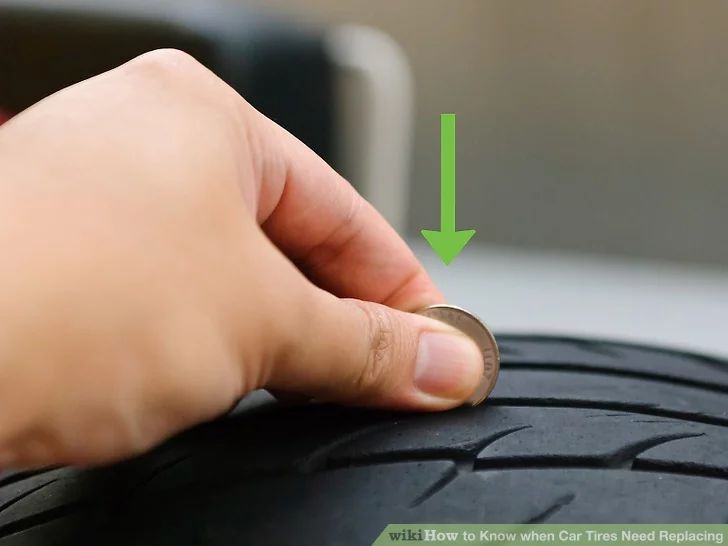 Many but not all tires carry a tread-life warranty in addition to manufacturing-quality/defect warranties. This information can be found online (like this example from tirerack.com), or in the tire maker's marketing materials. The industry's general rule is that about three-quarters of all drivers will find that their tires last at least last as long as the mileage listed in the tread life warranty. Generally, if your tires wear out before the guaranteed mileage bogey, you can get a credit for the percentage of miles you came up short, which you can then apply to the purchase of a new tire. (Tire dealers routinely handle this transaction.)
Many but not all tires carry a tread-life warranty in addition to manufacturing-quality/defect warranties. This information can be found online (like this example from tirerack.com), or in the tire maker's marketing materials. The industry's general rule is that about three-quarters of all drivers will find that their tires last at least last as long as the mileage listed in the tread life warranty. Generally, if your tires wear out before the guaranteed mileage bogey, you can get a credit for the percentage of miles you came up short, which you can then apply to the purchase of a new tire. (Tire dealers routinely handle this transaction.)
Numerous automakers fit their cars with run-flat tires from the factory. These tires are capable of driving for short distances at low speeds even after a puncture has left them without air, allowing you to reach home or a repair facility without needing to change a flat on the side of the road.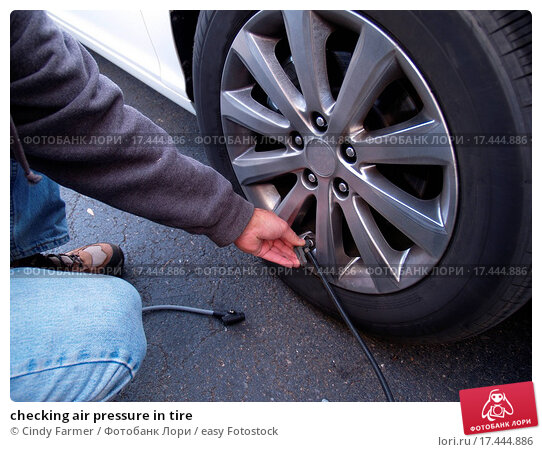 If your vehicle came on run-flats you have the option of replacing them with conventional tires and carrying a spare (but beware that some cars fitted with run-flats actually do not have a trunk compartment for a spare). Or, you can replace your worn run-flats with another set of run-flats. And now that tire-pressure monitoring systems are compulsory equipment in new cars, you could even fit run-flats on a car that didn’t originally come with them.
If your vehicle came on run-flats you have the option of replacing them with conventional tires and carrying a spare (but beware that some cars fitted with run-flats actually do not have a trunk compartment for a spare). Or, you can replace your worn run-flats with another set of run-flats. And now that tire-pressure monitoring systems are compulsory equipment in new cars, you could even fit run-flats on a car that didn’t originally come with them.
Run-flat tires do have downsides. Their stiff sidewalls, which are required to hold the tire up when deflated, tend to make the car ride noticeably harder over rough pavement, but tire tech is continually improving and run-flats aren’t nearly the penalty they were a decade ago. Choice is also more limited than with conventional tires and run-flats are premium-priced. In general, we'd recommend swapping to conventional tires and carrying a spare or mini-spare if possible.
In general, we'd recommend swapping to conventional tires and carrying a spare or mini-spare if possible.
There's one more decision you need to make: do you simply replace the tires on your vehicle with something equivalent, or upgrade?
If you're going to replace what came on the car with something equivalent, you're ready to go. Peruse the online resources like Tire Rack to compare tires, and then either buy from one of them or head to a local tire store. The advantage of buying online is that you can get the exact tires you want; different brick-and-mortar tire stores sell different brands of tires. The online retailers have relationships with the chain tire stores, which will mount the tires you bought on the internet on your wheels (for a small fee) even though you didn't buy them there.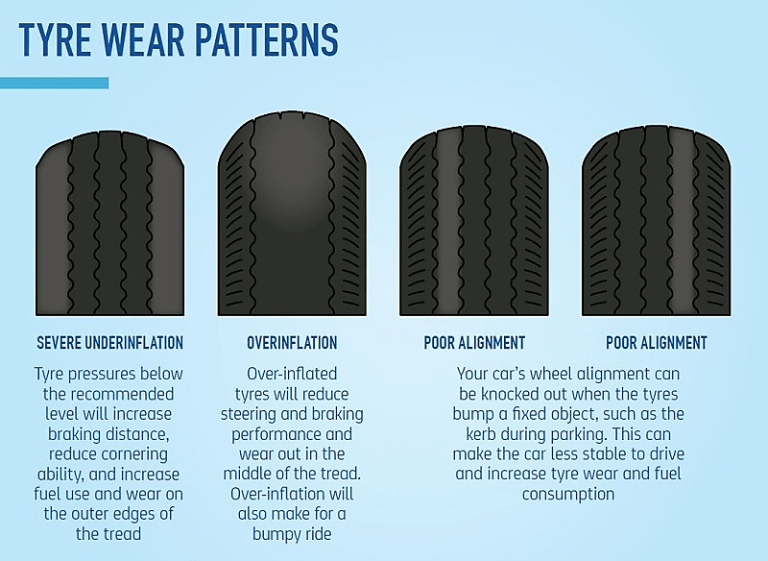 Tire Rack has a decision guide to help you find the tires that fit your car.
Tire Rack has a decision guide to help you find the tires that fit your car.
This is more complicated than simply replacing your tires, as you have several ways to go. You can choose a higher-performance tire of the same size on your current set of wheels by substituting, say, a high-performance all-season tire for a standard all-season—if you can find one that fits exactly. Or you can choose a set of wider, lower-profile summer or high-performance all-season tires, but this is trickier. You need to know if the tires will fit without rubbing on the suspension or body parts—a definite safety issue. Here, consulting one of the experts at Tire Rack is a must, as they have this information for many cars. You can also try checking an online forum for your make and model of car (if one exists).
Many vehicles can be had from the factory with several different tire sizes—Honda Civics, for example, come with tires ranging from 215/55-R16 to 245/30ZR-20—so going to a larger-diameter wheel might work.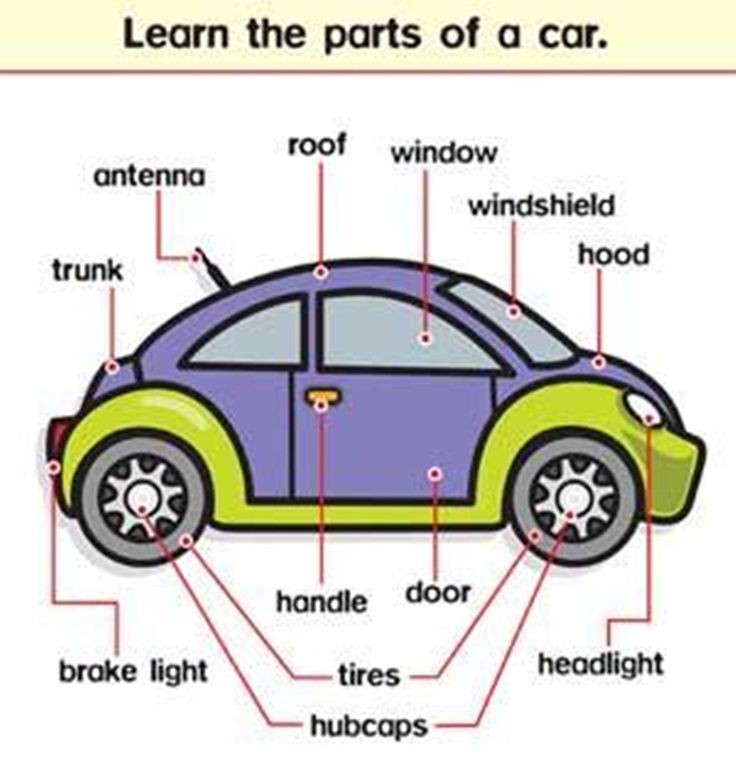 But know that fitting lower-profile rubber will almost always require a larger-diameter wheel. The outside diameter of your tires needs to remain constant; everything from your vehicle's suspension to its ground clearance to its gearing is affected by the overall size of the tires. As the sidewall gets slimmer, the wheel must grow to compensate. Use this size guide to see how switching to a lower-profile tire affects wheel diameter.
But know that fitting lower-profile rubber will almost always require a larger-diameter wheel. The outside diameter of your tires needs to remain constant; everything from your vehicle's suspension to its ground clearance to its gearing is affected by the overall size of the tires. As the sidewall gets slimmer, the wheel must grow to compensate. Use this size guide to see how switching to a lower-profile tire affects wheel diameter.
Wider, lower-profile higher-performance tires can also make the car ride rougher, wear faster, be noisier, and influence the steering, possibly causing you to have to make more steering corrections on the Interstate. Low-profile tires will also probably be more prone to damage from potholes, something we experienced with one of our long-term cars, which blew out a dozen of its low-profile tires in the course of 40,000 miles on our rutted Michigan roads. And they'll almost definitely be more expensive, plus you'll have to buy a new set of wheels. You'll need to consider all of these issues carefully before you make the leap.
You'll need to consider all of these issues carefully before you make the leap.
For everything you need to know about buying and maintaining tires, click here.
This content is imported from OpenWeb. You may be able to find the same content in another format, or you may be able to find more information, at their web site.
We believe everyone should be able to make financial decisions with confidence. And while our site doesn’t feature every company or financial product available on the market, we’re proud that the guidance we offer, the information we provide and the tools we create are objective, independent, straightforward — and free.
So how do we make money? Our partners compensate us. This may influence which products we review and write about (and where those products appear on the site), but it in no way affects our recommendations or advice, which are grounded in thousands of hours of research. Our partners cannot pay us to guarantee favorable reviews of their products or services. Here is a list of our partners.
Our partners cannot pay us to guarantee favorable reviews of their products or services. Here is a list of our partners.
If you don't want to stick with the type of tires that came with your car, look for the right size and the characteristics you want — and get started early.
Many or all of the products featured here are from our partners who compensate us. This may influence which products we write about and where and how the product appears on a page. However, this does not influence our evaluations. Our opinions are our own. Here is a list of our partners and here's how we make money.
The road is covered in a sheet of snow when the truck in front of you jams on the brakes. You hit the brake pedal and feel the tires gripping, safely bringing you to a stop just short of the truck’s rear bumper.
If something like this has happened to you, then you probably took the time to choose the right tires for your car. Picking tires that can handle weather and road conditions you encounter is one of the most important decisions you can make.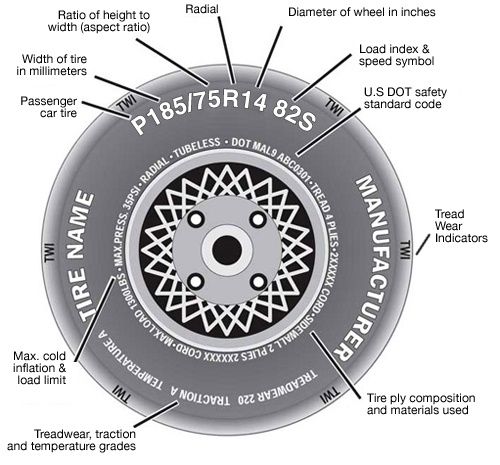 After all, your car’s tires are your only connection to the road.
After all, your car’s tires are your only connection to the road.
So when it’s time for new rubber, consider the following factors to ensure you choose the best tires for your car:
When it comes to purchasing tires, “a good place to start is to consider buying the same ones that came on the car,” says Dan Edmunds, director of vehicle testing for car site Edmunds.com.
If you like the way the car rides and handles, buy the original equipment, or OE, tires your car came with from the manufacturer.
This is the easiest option: Since the tires were designed for your car, you know they’ll be a good fit. You can find out which tires came with your car by looking in your car’s owners manual or doing a quick search on an online tire retailer’s website.
But if you want to change the ride characteristics of your car, you’ll need to do a bit more research. Edmunds says to read online tire reviews or refine your search for specific characteristics (more on that below).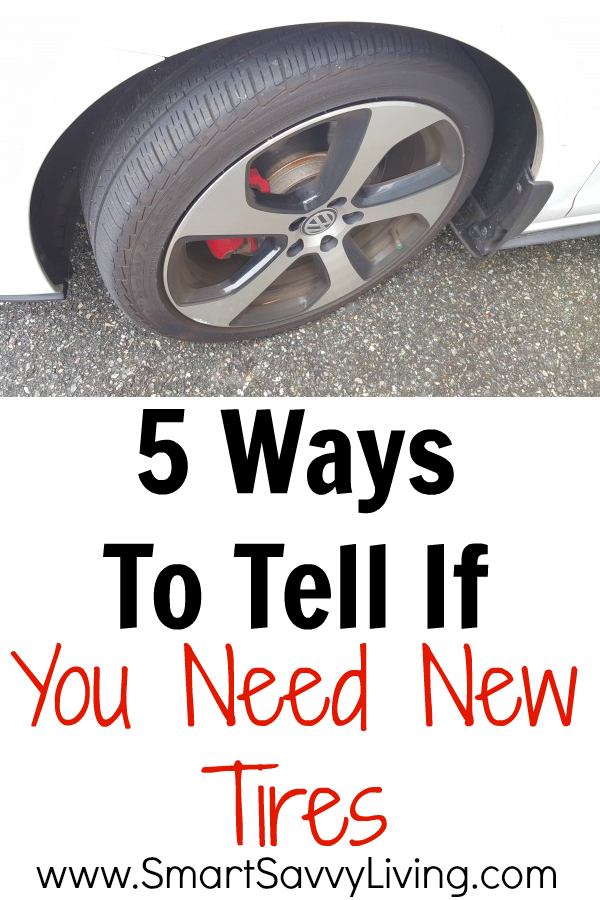
Locate a placard on the driver’s side door that indicates what size tires fit your car. For example, your tire size might read P215/65 R15. This string of numbers and letters denotes the tire width, the height compared to the width, and the diameter. In most cases, your new tires should match this size.
If you shop for tires online, you can easily find your tire size on a retailer’s website, such as TireRack.com. Just enter the year, make and model of your car and you’ll find the tire size and a list of tires that match the size and will work for your car. You can then compare tire reviews and prices.
“Tires define the personality of the vehicle,” says Gene Petersen, tire program manager for Consumer Reports, which tests and reviews tires. He tells drivers to choose tires that are not only the right size, but that also optimize the car’s handling and braking ability.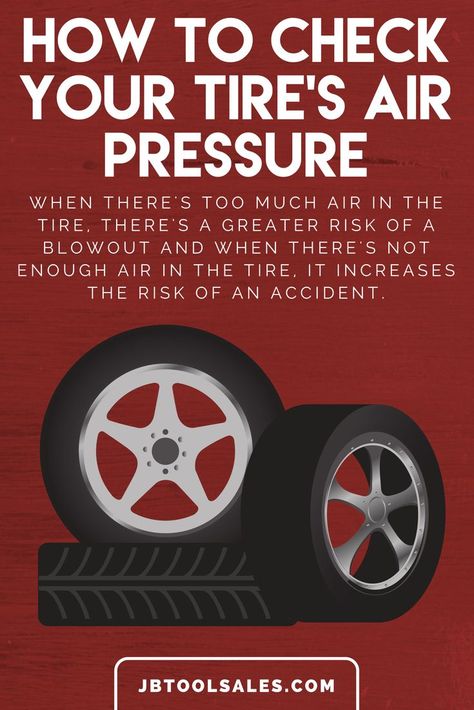 Finally, search for tires that reduce road noise and provide a comfortable ride.
Finally, search for tires that reduce road noise and provide a comfortable ride.
However, keep in mind that there will only be a few brands of tires that are developed specifically for your car, Edmunds says.
“They are chosen to achieve the ride and quietness and handling that creates the personality [the manufacturer] wants that car to have,” Edmunds says.
You’ll also need to decide whether you want all-season, winter or summer tires. Here’s a description of the differences among those tire types:
All-season tires are the most popular because, as the name indicates, you can leave them on the car year-round. “All-season tires provide some modest grip and traction on ice and a good compromise of dry and wet grip,” Petersen says.
Winter tires are not designed for all-year use. This means that you’ll either have to buy an extra set of wheels or have an installer swap them with your summer tires as winter approaches. Winter tires are made of a pliable rubber compound that performs best in cold temperatures. They also have a deeper tread and more slits (called “sipes”) to break ice and bite into snow.
Winter tires are made of a pliable rubber compound that performs best in cold temperatures. They also have a deeper tread and more slits (called “sipes”) to break ice and bite into snow.
Summer tires are best suited to sports cars for performance driving and provide good grip on dry roads in warm temperatures and at high speeds. However, the soft rubber compound does not provide good traction below about 40 degrees or on snowy surfaces.
Don’t wait until your tires are dangerously worn before you begin shopping. Petersen suggests checking your current tires by inserting a quarter into the tread. If the top of George Washington’s head (pointing down) is even with the tread, it’s time to begin the shopping process. If you insert a penny and the tread is even with the top of Abraham Lincoln’s head, the tires are becoming unsafe and you should buy new ones right away.
If you get started early, you’ll have plenty of time to research tires and shop the best prices. Once you know your tire size, and the type of tire and characteristics you want, you can read reviews and check out ratings from sites like Consumer Reports and SaferCar.gov.
Once you know your tire size, and the type of tire and characteristics you want, you can read reviews and check out ratings from sites like Consumer Reports and SaferCar.gov.
When you find and price the tires you want online, you may be able to get a brick-and-mortar tire shop to beat that price. If not, you can order the tires online, have them sent directly to a local installer and then bring your car in when they arrive.
So plan ahead — you’ll wind up with a smooth and safe ride, and you might even save some money.
About the author: Philip Reed is an automotive expert who writes a syndicated column for NerdWallet that has been carried by USA Today, Yahoo Finance and others. He is the author of 10 books. Read more
On a similar note...
Get more smart money moves – straight to your inbox
Sign up and we’ll send you Nerdy articles about the money topics that matter most to you along with other ways to help you get more from your money.
Subscribe to our VK community!
Spring has come, which means that it's time to change the tires on your car from winter to summer. Many motorists faced the problem of choosing such a product, especially since tires greatly affect the safety of movement. Tires should be chosen according to certain rules. In our review, before considering the best summer tires in 2022, we present the main characteristics regarding this product. So let's get started!
Rating summary: (hide/show)
There are a large number of tires in stores today, so making a mistake with a choice is quite easy. Classical rubber is considered to be highway - it is designed for public roads. The protector has well-defined longitudinal grooves, due to which moisture is quickly removed from the contact patch. They make almost no noise while driving. Unfortunately, they are not very suitable for off-road - depending on the type of shock absorber, any bumps will be strongly felt.
Unfortunately, they are not very suitable for off-road - depending on the type of shock absorber, any bumps will be strongly felt.
The next type of tire is all-season - it is versatile, as it can be used throughout the year. However, such products will retain their key characteristics at ambient temperatures down to -7 degrees. In colder weather, the tire becomes dull and loses its elasticity, resulting in poor handling. For most regions of our country, it is not suitable for use in the winter months.
Sports tires are suitable for drivers who love high speed and also prefer an aggressive driving style. It is made from a special mixture of rubber, at high speed it makes it easy to maneuver, almost no noise. However, due to the fact that it is made from fairly rigid materials, any, even a slight bump or hole, will be well felt. Contact with the road is as tight as possible, due to the not too embossed tread.
TOP of the best summer tires 2019
It is the tread that you should pay attention to when choosing summer tires - today one of the most popular is symmetrical directional, it is ideal for most motorists, but does not tolerate aggressive driving and too high speeds. The asymmetric non-directional tread pattern allows you to quickly remove moisture from the contact patch, showed itself well during sharp maneuvers or sharp turns. There are two more types of tread - symmetrical directional and asymmetric directional. They are less common.
The asymmetric non-directional tread pattern allows you to quickly remove moisture from the contact patch, showed itself well during sharp maneuvers or sharp turns. There are two more types of tread - symmetrical directional and asymmetric directional. They are less common.
When compiling our review, we considered not only all the above points, but also took into account such points as value for money, user reviews and professional drivers, and many other characteristics. We really hope that the information we have collected will allow you to choose the most suitable summer tires for your car.
One of the softest products that can only be found on the Russian market. Even on the toughest shock absorbers, it easily swallows serious bumps and pits. Rides quite smoothly, handling is excellent. On asphalt, it behaves just perfectly. Wear is weak - this is noticeable on the wear control track: even after 4-5 thousand kilometers it remains at the same level and does not wear out at all.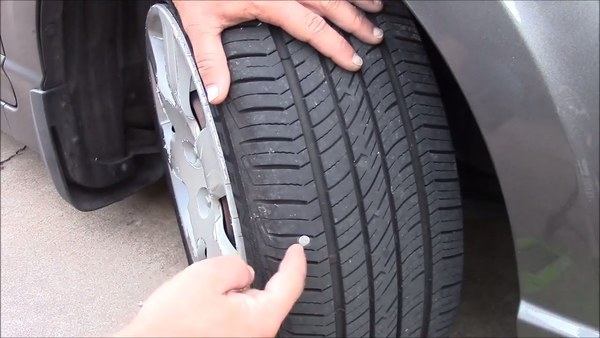 There are different diameters, so these tires will fit on any discs, the same can be said about the width of the profile. Tires are not designed for high speeds - when driving around 140-150 km / h, a deterioration in handling begins to be felt.
There are different diameters, so these tires will fit on any discs, the same can be said about the width of the profile. Tires are not designed for high speeds - when driving around 140-150 km / h, a deterioration in handling begins to be felt.
In addition, this product is not suitable for fairly heavy vehicles - this rubber can withstand a car weight of up to 900 kg per tire. While driving, it does not make any noise at all, it emits a slight rumble, but on a smooth surface it is completely inaudible. It showed itself well during braking, including emergency braking, the braking distance is insignificant.
Advantages:
Drawbacks:
Triangle Group TR928
 Yokohama Blu Earth AE01
Yokohama Blu Earth AE01 This product allows you to save on fuel consumption - the rolling resistance coefficient is lower by about 20% compared to the average. Products are made of elastic rubber, due to which the contact patch is very large - this ensures good grip with the road surface even during rain. Tires are considered very safe, moreover, they are resistant to wear, almost no noise on the asphalt surface.
This summer tire is made from a synthetic rubber compound with natural orange oil and additional nanotechnology. Tire weights are 10% lower than average. The design of the sidewalls is designed in such a way that it is possible to provide excellent aerodynamics. Products are able to travel quite a long distance - the manufacturer claims about 100 thousand kilometers. According to user reviews, this figure is greatly underestimated, rubber can last up to 200 thousand km.
Benefits:

Disadvantages:
Yokohama Blu Earth AE01
This product belongs to the universal models, that is, it is perfect not only for traditional cars, but also for crossovers. Manufacturers managed to achieve this factor by increasing the speed index and increasing the maximum allowable load. The rubber is quite maneuverable, but it is still dangerous to use it at high speeds, but with lateral loads during sharp turns or when it is necessary to perform a sharp maneuver, this product copes perfectly. If the load turns out to be excessively high, then autonomous-type side blocks are connected, since they are separated by transverse slots. This allows you to protect the tires from lateral breakdowns.
Not suitable for dirt roads or off-road, especially after rain - you can easily get stuck on it.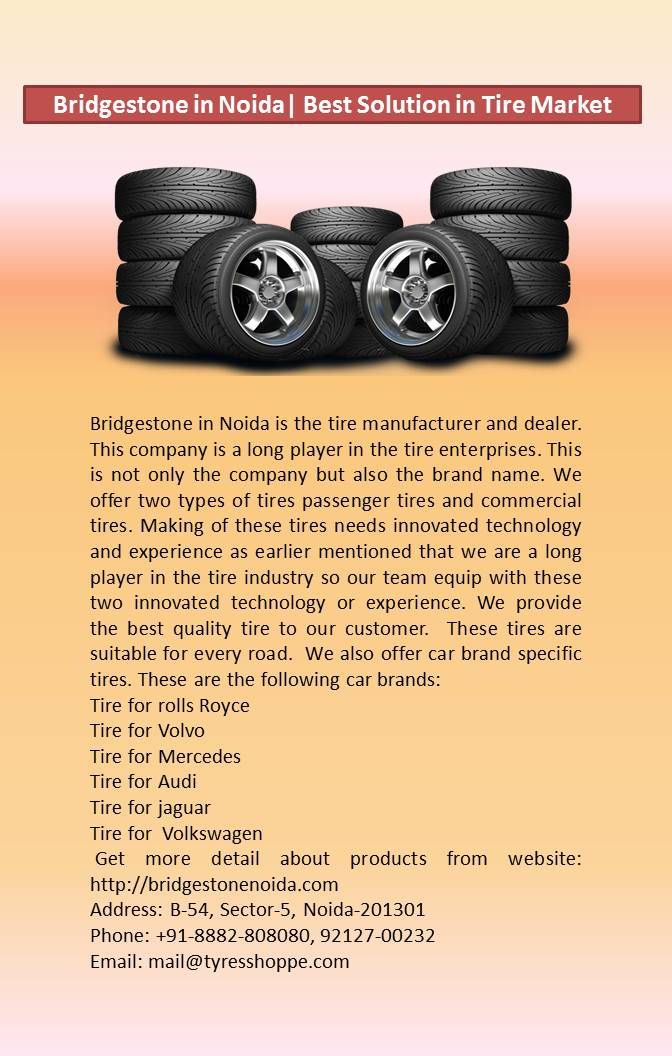 The tread pattern is asymmetric, due to which it was possible to significantly improve the performance of the product during braking and during dynamic driving. The noise level is average, however, it cannot be said that these wheels hum too much. The tires are manufactured using Silent Groove Design technology, which results in noise levels well below average. These tires are produced on the basis of natural rubber, which greatly increases the elasticity of the tires.
The tread pattern is asymmetric, due to which it was possible to significantly improve the performance of the product during braking and during dynamic driving. The noise level is average, however, it cannot be said that these wheels hum too much. The tires are manufactured using Silent Groove Design technology, which results in noise levels well below average. These tires are produced on the basis of natural rubber, which greatly increases the elasticity of the tires.
Advantages:
Disadvantages:
Nokian Nordman SX2
special Michelin Ironflex TM technology. The carcass threads are made on the basis of a material with increased strength and elasticity. In addition, the sidewall is also designed differently, due to the peak loads are distributed throughout the structure and do not damage the tires. The drainage channels are made quite wide, so moisture practically does not get to the contact patch. This allows you to maintain traction even during heavy rain.
In addition, the sidewall is also designed differently, due to the peak loads are distributed throughout the structure and do not damage the tires. The drainage channels are made quite wide, so moisture practically does not get to the contact patch. This allows you to maintain traction even during heavy rain.
The tread sipes have different depths, so the rubber retains its original shape during acceleration and braking and does not transform. This approach extends the life of the product, and also greatly reduces the braking distance. The rubber contains a high percentage of silicone, so it has low rolling resistance - this significantly saves fuel.
Advantages:
Disadvantages:
Michelin Energy XM2
 Kumho Ecsta SPT KU31
Kumho Ecsta SPT KU31 Equipped with even wear and low noise treads. During the development process, special attention was paid to wet grip. Even with an average degree of wear, the rubber shows ideal characteristics in terms of safety and driving comfort. The rubber compound is exactly the same as the products tested in professional racing, so it will perform excellently even at high speeds. In terms of its driving qualities, rubber is able to satisfy most car owners.
There are annular channels on the tread, the pattern has an elementary V-shaped direction, but this does not reduce the area of the contact patch in any way. Rubber has reliable protection against hydroplaning on wet surfaces. External channels are additionally equipped with lamellas that remove water. Driving stability is ensured by a straight central rib and some asymmetric grooves. The tread blocks are slightly rounded, which allows them to withstand significant loads, including during sharp maneuvers or emergency braking.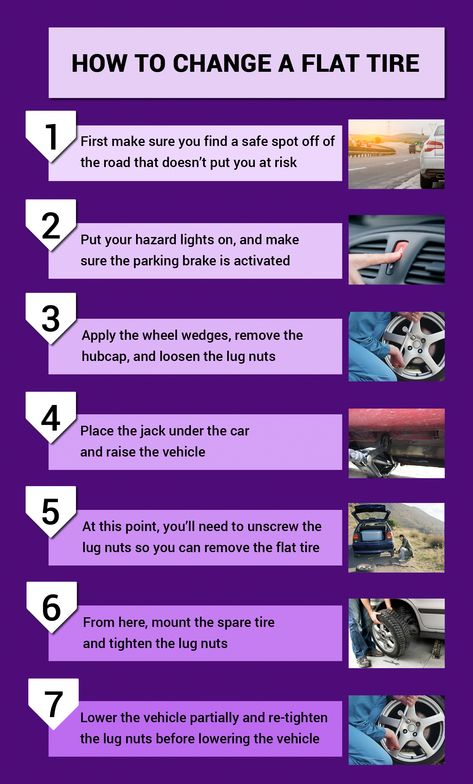
Benefits:
Disadvantages:
Kumho Ecsta SPT KU31
This model belongs to all-weather products, but professional drivers recommend using it in the warm season. It can be used for cars, and for crossovers or SUVs. Despite the fact that the model was developed back in 2012, until today it remains at the peak of its popularity not only due to its high performance, but also due to the ability to reduce fuel consumption. In wet weather, tight contact with the road surface is ensured. Rubber is made from a special proprietary blend of orange oil and silicon dioxide.
The profile has an increased level of rigidity, so the tire will hardly deform even during peak loads. It practically does not lose energy while driving, the tread wears out evenly, so even worn tires will not affect the vehicle's handling. The grooves are made in the form of a zigzag, well remove moisture from the contact patch, reduce noise and ensure tight contact with the coating.
It practically does not lose energy while driving, the tread wears out evenly, so even worn tires will not affect the vehicle's handling. The grooves are made in the form of a zigzag, well remove moisture from the contact patch, reduce noise and ensure tight contact with the coating.
Advantages:
Disadvantages:
Yokohama Geolandar SUV G055
These are one of the best 2 year summer tires, characterized by directional tread and designed for fairly high speeds. They can also be used on sports cars. Such rubber perfectly adheres to the road, steadily holds the coating at high speeds, it wears out slightly even with aggressive driving. Brakes very effectively in all conditions. The tread pattern provides good balance in all weather conditions. During the movement, the rubber is completely silent due to the use of Acoustic Surface technology.
During the movement, the rubber is completely silent due to the use of Acoustic Surface technology.
The shoulder blocks have so-called multi-contour slots, due to which the rubber perfectly withstands lateral loads, including contact with the curb. They are also responsible for uniform wear.
Benefits:
Disadvantages:
Toyo Proxes ST III
All the positive characteristics of such tires are best seen at high speeds - not every rubber can boast of such quality. It has a very attractive appearance and a wide profile that provides tight contact with the road surface and a large patch area. This rubber has received a lot of positive feedback from professional riders. It was developed using the most modern technologies, the creators paid special attention to the safety, performance and environmental friendliness of their products. Were not deprived of attention and such qualities as handling and stability. Tires instantly react even to minor movements of the steering wheel, so there are no problems with handling.
It was developed using the most modern technologies, the creators paid special attention to the safety, performance and environmental friendliness of their products. Were not deprived of attention and such qualities as handling and stability. Tires instantly react even to minor movements of the steering wheel, so there are no problems with handling.
The product copes well with both longitudinal and transverse aquaplaning. The drainage system proved to be very effective. In the tread, you can immediately see four large drainage channels, a lot of cuts and notches. The slats are small in size, so the noise emitted during the ride is not too strong. The tread here is of a directional type, continuous in the central part, there are no notches on it in this area. The side zones have an additional rubber sealing ring, with its help it is possible to protect the structure from the occurrence of lateral cuts of breakdowns due to impact.
Advantages:

Disadvantages:
Hankook Ventus V12 evo K110
These are the best summer tires of the year among all presented on the Russian market today, despite the fact that they were developed back in 2011. The most modern technologies were used in the production process, thanks to which it is possible to save a lot on fuel. The composition of rubber contains an elastomer that provides good plasticity to products, a special agent that increases the level of strength, as well as a synthetic plasticizer. This product is distinguished by an original tread pattern, which is slightly cut off at the edges - this makes the wear even and increases the contact patch. It has a significant number of autonomous blocks, which, when hit by bumps, will be pressed closer to each other.
Asymmetrical tread pattern to prevent hydroplaning on wet or frozen roads. Longitudinal grooves easily cope with excess fluid and prevent skidding.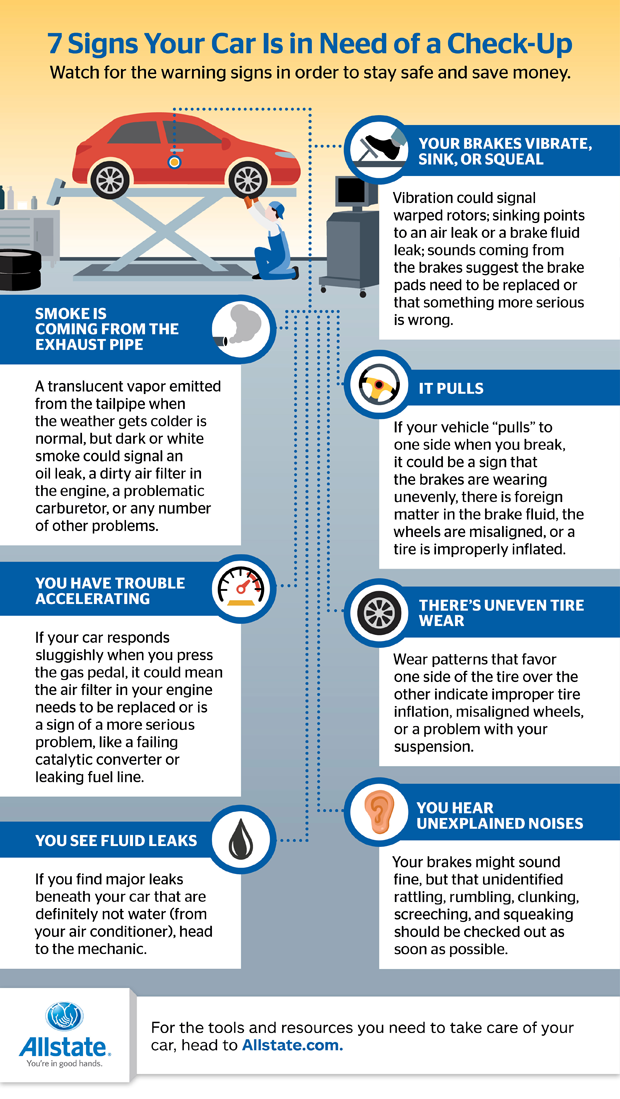 The thickness of the lamellas is only 0.2 mm, however, under increased loads, they provide closer contact with the road surface. The contact patch is made as large as possible, so even during emergency maneuvers the car will not skid to the side.
The thickness of the lamellas is only 0.2 mm, however, under increased loads, they provide closer contact with the road surface. The contact patch is made as large as possible, so even during emergency maneuvers the car will not skid to the side.
Benefits:
Disadvantages:
Michelin Primacy 3
This concludes our review of the best summer tires in 2022. We hope that it was very useful for you and helped you choose the most suitable product. If any questions remain unanswered or there are certain difficulties in terms of selecting rubber, then welcome to the comments on our article.
Season
SelectReset filter
extended selection
How to find out the correct tire size for your car?
29.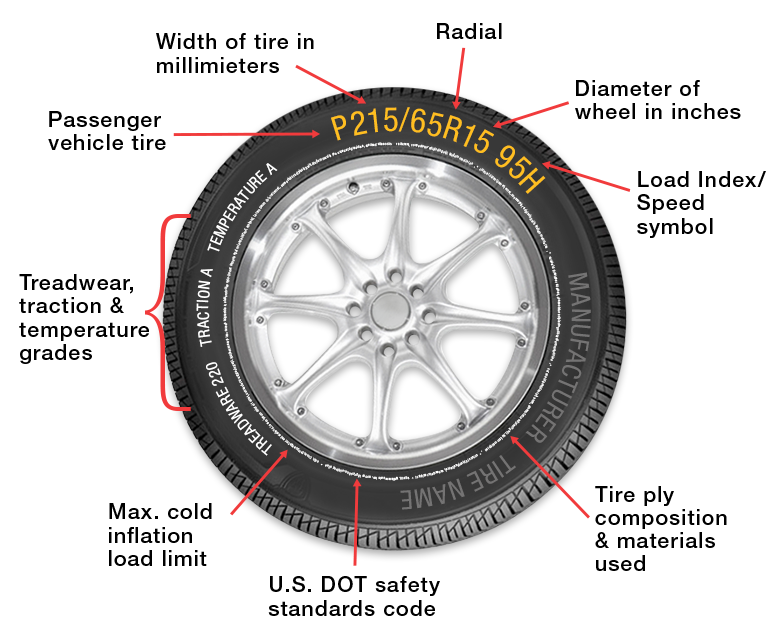 06.2019
06.2019
Author: Sergey Akhmetov
Views: 31317
If you don't know what size of tires should be on your car or are not sure that the size recommended by the manufacturer is currently installed on it, then you are at the right place.
Here are 7 ways to find out the correct tire size for your car:
1. Look at the size on the sidewall of the tire that is currently installed on the car
You can read how it looks and how to read the designations on tires correctly in our article “Tyre marking: basic parameters”. This method is suitable if you know that the car has factory tires or that the car is still under warranty. Otherwise, read on.
2. See the recommended tire sizes depending on the car model:
- on the inside of the glove compartment
- on the end part of the driver's door
- on the side of the car
- on the inside of the gas tank hatch
3.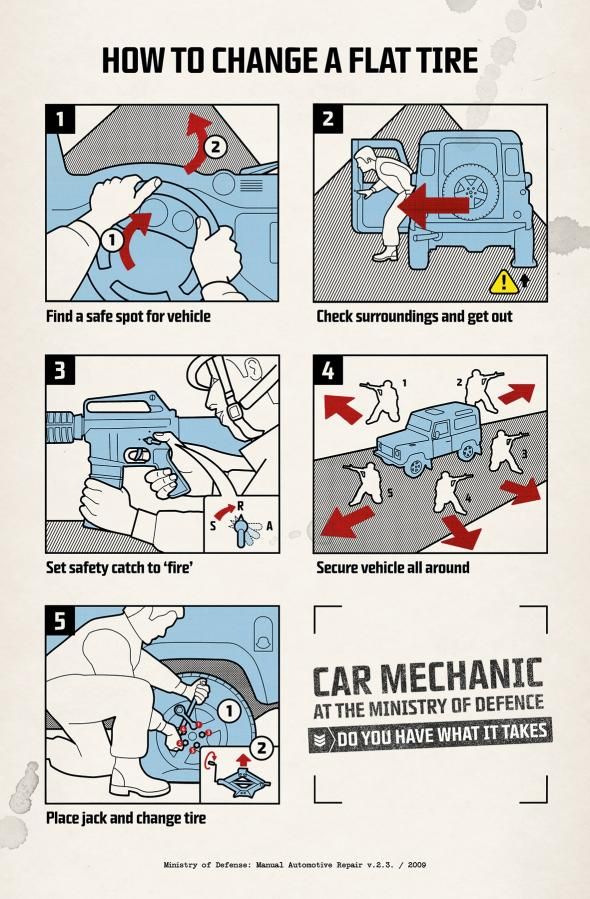 Look at the operating manual of your car 9000
Look at the operating manual of your car 9000
as as a rule, the relevant section (Chassis, Tires / Wheels, etc.) contains information on the permissible rubber sizes.
4. Look at the website of the car manufacturer or its dealer
This method may suit you if the car is still being produced and sold. In this situation, data on the sizes of tires and wheels, as a rule, is contained in the "Technical Specifications" or "Car Equipment" section.
5. Call the official service that serves your brand of car
other car. The same applies to absolutely new models on the market - especially Chinese ones. Sometimes, except for the "officials", no one knows what tires and wheels can be put on them.
6. Use the selection of tires by car brand
Specialized online stores have the service "Selection of tires by car brand", which allows you to immediately determine by manufacturer, model, year and engine size which tire sizes and for which diameter can be put on the car. Here you can see not only your factory size, but also alternative options, if, for example, there is a need to switch to smaller / larger diameter rims, install tires of different widths, etc.
Here you can see not only your factory size, but also alternative options, if, for example, there is a need to switch to smaller / larger diameter rims, install tires of different widths, etc.
7. Find information on the forum of the owners of your car model
It is often on the forums of car owners that you can quickly find all the necessary information not only on tires, but also on many other issues. People there, as a rule, are active and ready to share various kinds of information with like-minded people.
Whichever method you choose for yourself, it is important to understand that the correct size of tires on a vehicle is:
We also recommend that you always consult a competent person before installation.